When choosing a pergola, pergola sizes are one of the most important factors that determine both functionality and aesthetics. Whether you’re building in your backyard, garden, or a commercial setting, understanding standard pergola sizes and the right measurement techniques will help you design a perfect outdoor space.
1. What Are Standard Pergola Sizes?
Standard pergola sizes commonly include:
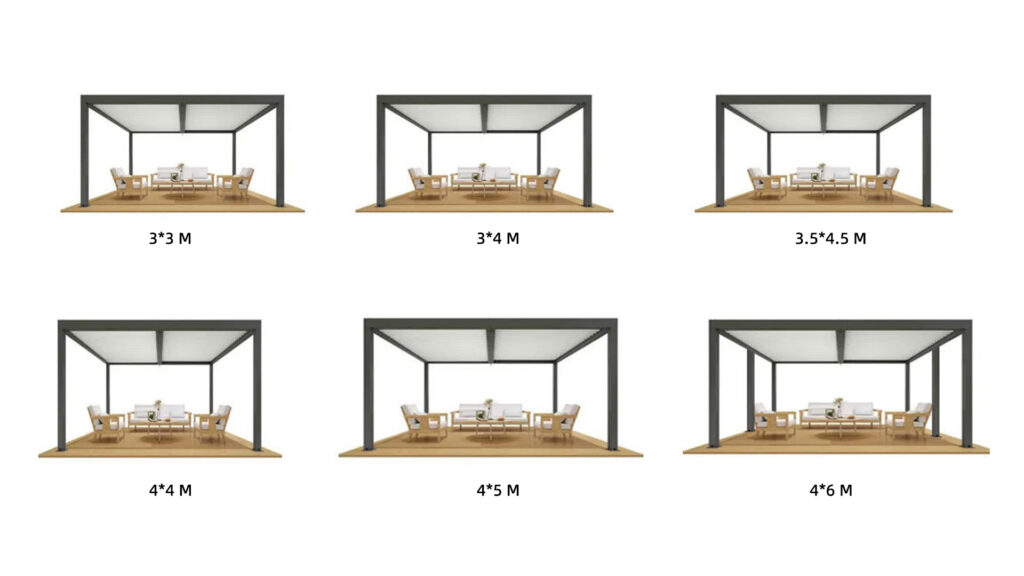
- 3×3 meters
- 3×4 meters
- 3.5×4.5 meters
- 4×4 meters
- 4×5 meters
- 4×6 meters
These pergola sizes are widely used for residential patios, backyard lounges, poolside spaces, and outdoor restaurants. Choosing the correct size will not only maximize your shaded area but also create the ideal flow for your outdoor activities.
2. How to Read Pergola Size Specifications
Understanding pergola size specifications is essential before purchase. Here’s what you should know:
- Length × Width × Height: This is the basic measurement format.
- Post-to-post spacing: Important for internal usable space.
- Projection area: Refers to the actual shade coverage.
- Wall-mount vs freestanding dimensions: Wall-mounted pergolas usually include overhangs.
When selecting your pergola, make sure to confirm whether the listed size refers to the total footprint or the actual shading area.
3. Recommended Pergola Sizes by Space
Backyard Pergola Size Guide
- Recommended size: 3×3 m or 3×4 m
- Fits outdoor seating for 4–6 people
- Works well with smart pergolas or retractable pergolas
Garden and Small Courtyard Pergola Sizes
- Recommended size: 3×3 m or compact manual pergola
- Perfect for smaller green spaces or tight corners
Pergola Sizes for Restaurants and Cafés
- Recommended size: 4×5 m or 4×6 m
- Supports multiple dining tables under a freestanding pergola
Poolside Pergola Size Recommendations
- Recommended size: 4×4 m or 4×6 m
- Offers excellent shade for sun loungers and poolside seating
Pergola Sizes for Large Outdoor Events
- Recommended size: 4×6 m or larger, with modular setups
- Popular for commercial events, weddings, and large decks
4. Types of Pergolas: Smart, Retractable, and Manual
Choosing the right pergola type is as important as its size.

Smart Pergola
- Integrated sensors for wind, rain, and sunlight
- One-touch electric operation
- Suitable for modern homes and luxury spaces
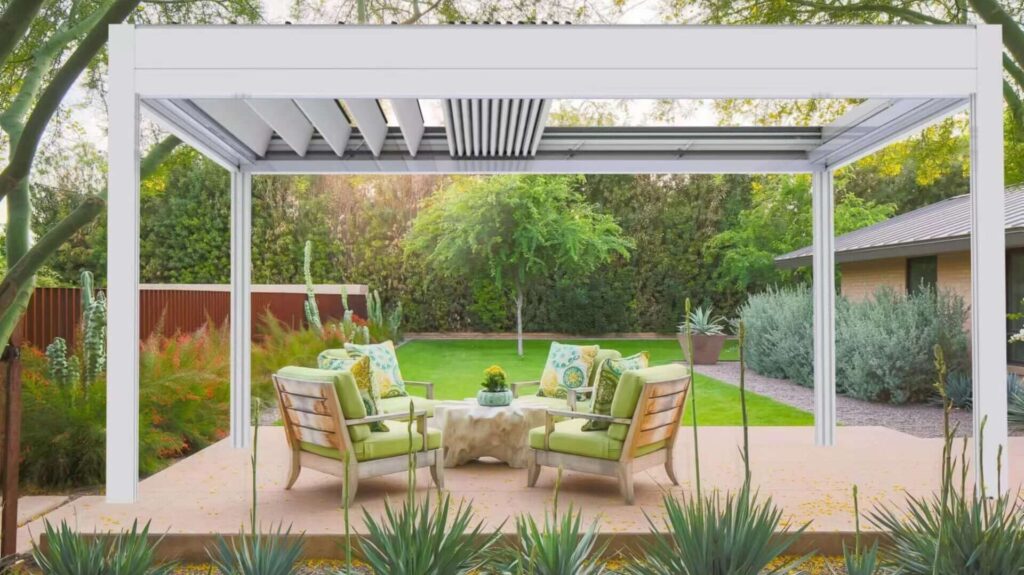
Выдвижная пергола
- Flexible canopy opening and closing
- Available in both electric and manual options
- Perfect for changing seasons and dynamic shading needs

Ручная пергола
- Operated by a hand crank
- Cost-effective, simple, and durable
- Suitable for budget-conscious homeowners
5. Pergola Installation Types: Freestanding, Wall-Mounted, and Hanging
Freestanding Pergola Sizes
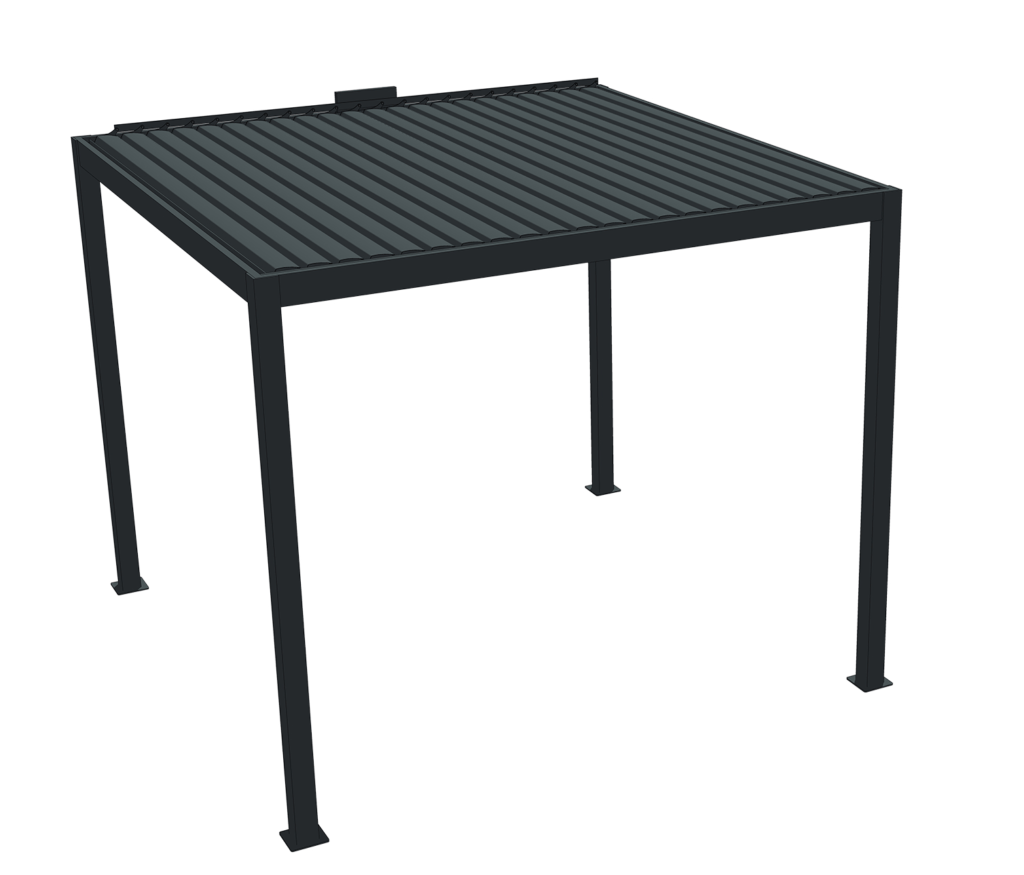
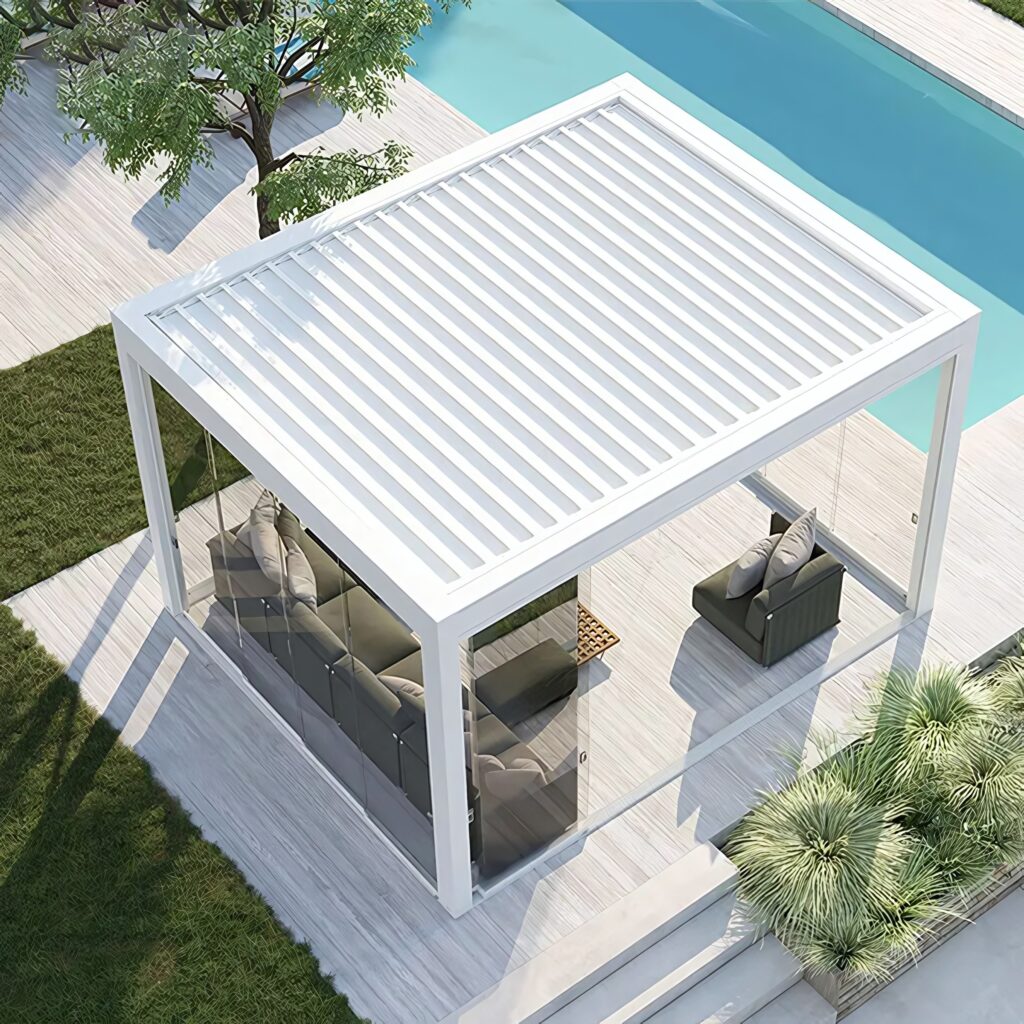
- Common sizes: 3×3 m to 4×6 m
- Perfect for open spaces like gardens and poolside areas
Wall-Mounted Pergola Sizes

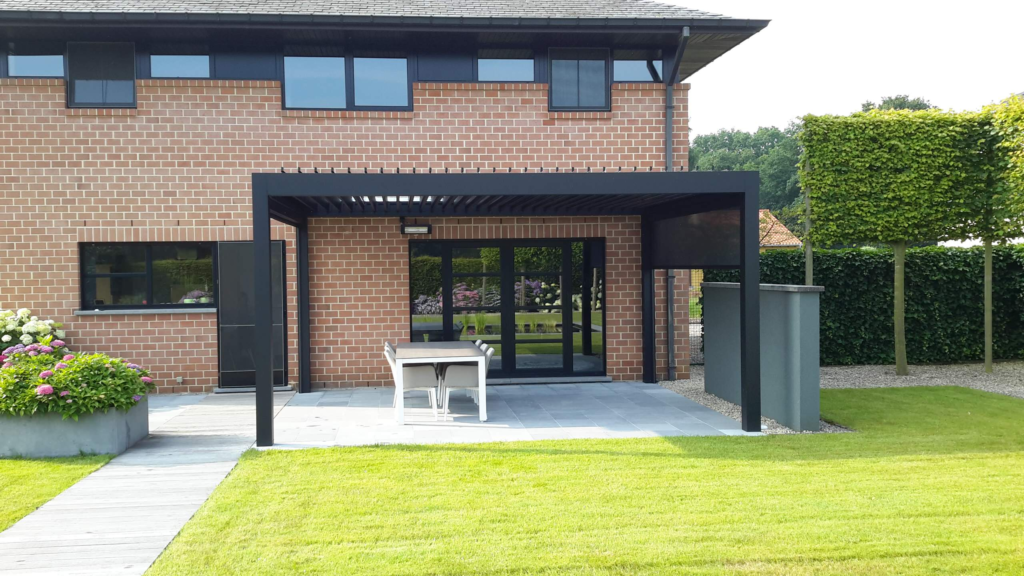
- Common sizes: 3×2.5 m to 4×5 m
- Ideal for patios, balconies, and backyard decks
Hanging Pergola Sizes


- Custom sizes based on structural support
- Excellent for limited spaces, small cafés, or balconies
Each installation type requires different measurement considerations and impacts the final pergola footprint.
6. How to Measure Pergola Size for Installation
Accurately measuring your pergola size is essential to ensure a smooth installation and perfect fit. Follow this step-by-step guide to measure your space properly.
Step 1: Measure the Total Available Floor Area
Use a measuring tape to determine the length and width of the space where you plan to install the pergola.
✔️ Measure from edge to edge at ground level.
✔️ Record the maximum usable space, not just the shaded area you desire.
Step 2: Check for Surrounding Obstacles
Inspect the installation area for nearby structures or objects that may interfere with the pergola.
✔️ Measure the distance from walls, doors, windows, downspouts, trees, and fences.
✔️ Ensure you leave enough clearance (typically 20–30 cm) on all sides to prevent obstruction and allow for ventilation.
Step 3: Measure Height Clearance
Measure the vertical distance from the ground to any overhead structures, such as eaves, balconies, or ceiling beams.
✔️ The minimum recommended pergola height is 2.5 meters to allow comfortable movement underneath.
✔️ For wall-mounted pergolas, verify that the mounting point on the wall is high enough to maintain a comfortable slope or drainage angle.
Step 4: Account for Drainage, Motor Tracks, and Overhangs
If you are installing a smart pergola or retractable pergola, you need to allow extra space for system components.
✔️ Measure and reserve space for motor boxes, drainage pipes, and any lateral tracks.
✔️ Check the product specifications to see how much additional space is required outside the main frame.
Step 5: Mark Post Locations and Alignment
For freestanding pergolas, mark where each post will stand using chalk or temporary markers.
✔️ Measure post-to-post distances to ensure perfect alignment and square angles.
✔️ For wall-mounted or hanging pergolas, carefully measure the mounting points on the wall to ensure they align with the structure’s design.
7. Conclusion
Selecting the right pergola sizes will transform your outdoor space, whether you’re building a cozy garden nook or an expansive poolside lounge. Consider your intended use, installation type, and pergola function—whether smart, retractable, or manual—to make the best long-term investment.
8. FAQs About Pergola Sizes
What are the most common pergola sizes?
The most popular pergola sizes are 3×4 m and 4×4 m, suitable for backyards and garden lounges.
How do I measure my pergola size correctly?
Measure the full installation area, check for obstacles, and allow extra space for overhangs and motor tracks.
Can I install a pergola in a small backyard?
Yes, a 3×3 m pergola is perfect for small backyards, gardens, or compact patios.
What is the best pergola size for restaurants?
For outdoor dining, a 4×5 m or larger pergola is recommended to comfortably cover seating areas.
Which pergola type is best: smart, retractable, or manual?
It depends on your needs. Smart pergolas offer automation, retractable pergolas provide flexible shading, and manual pergolas are budget-friendly.

